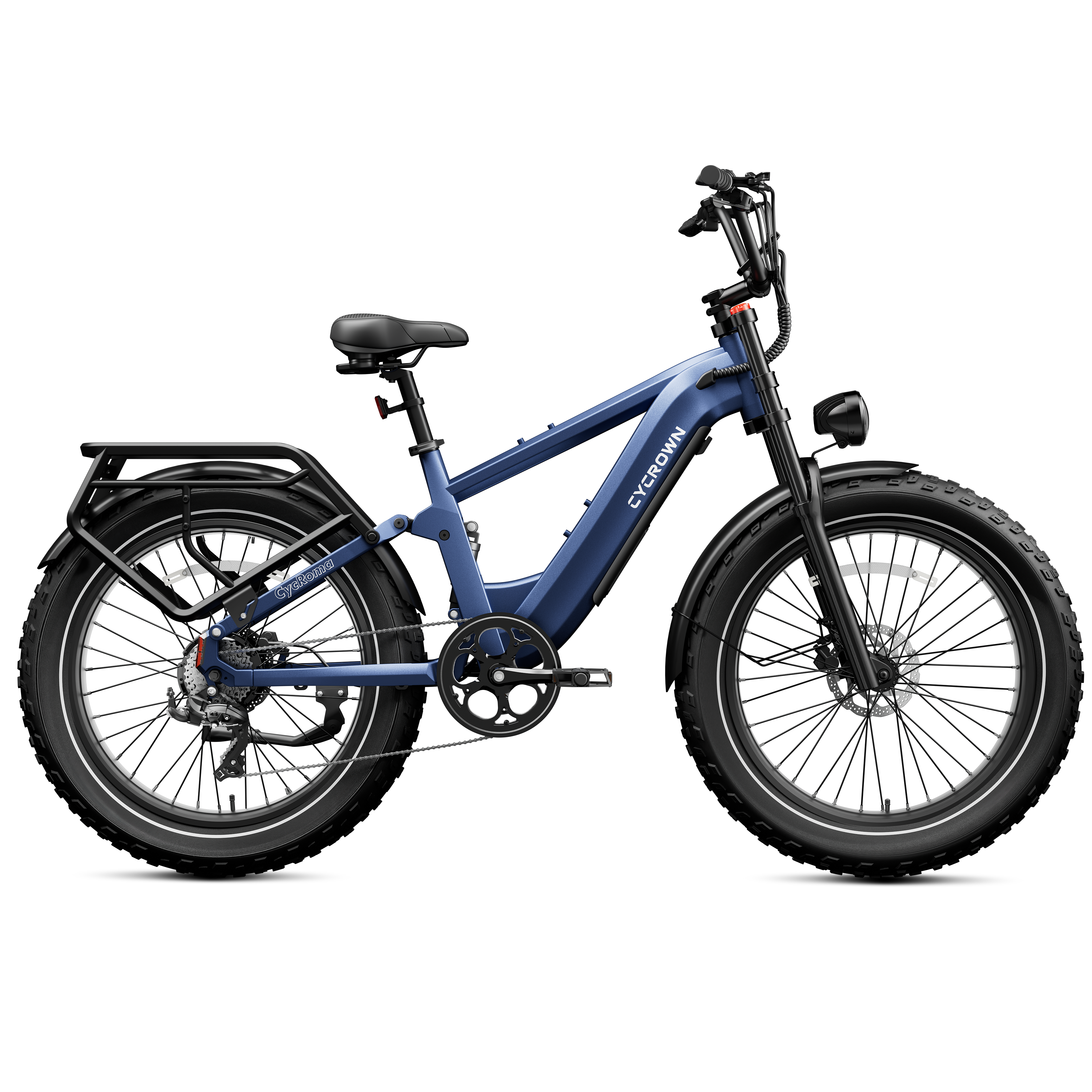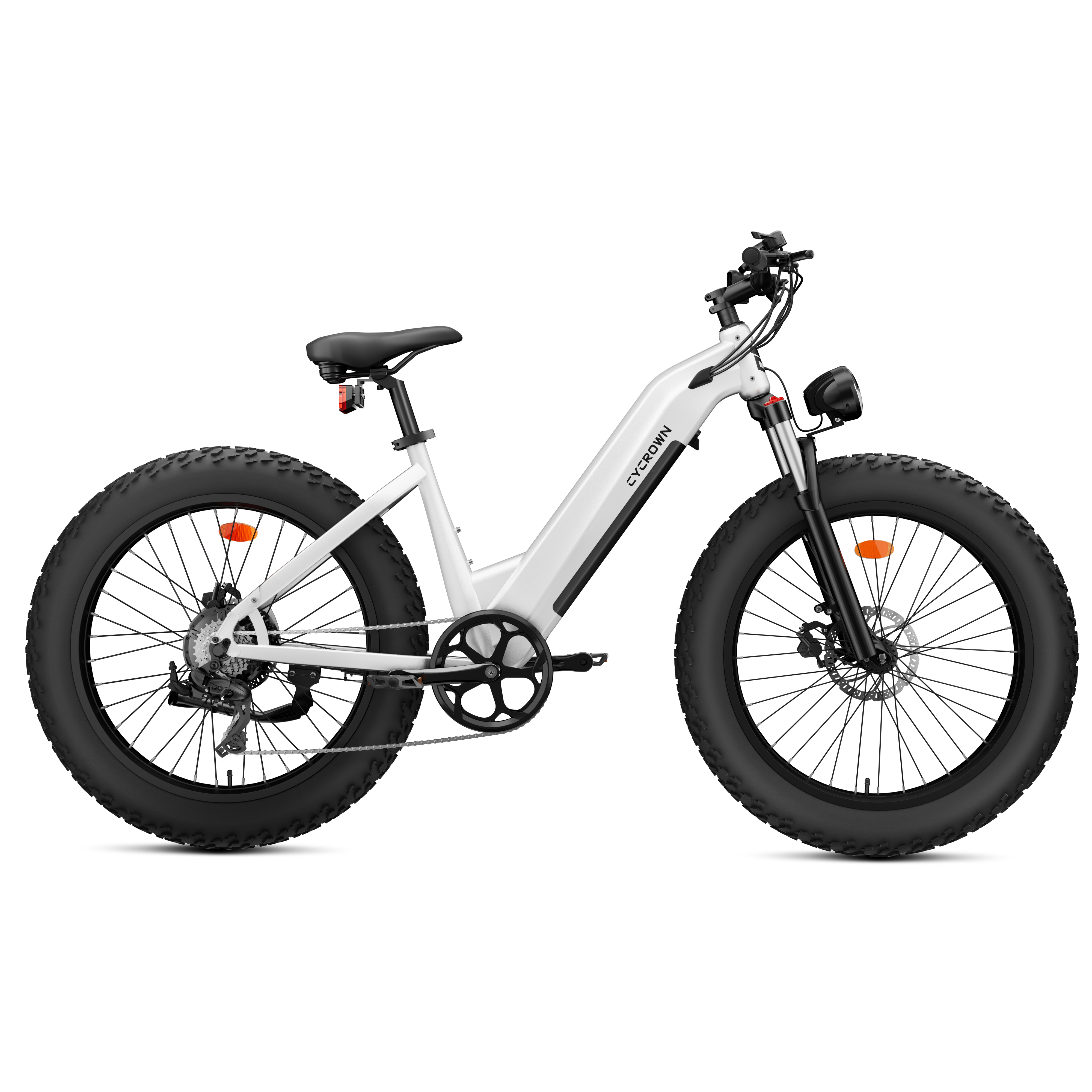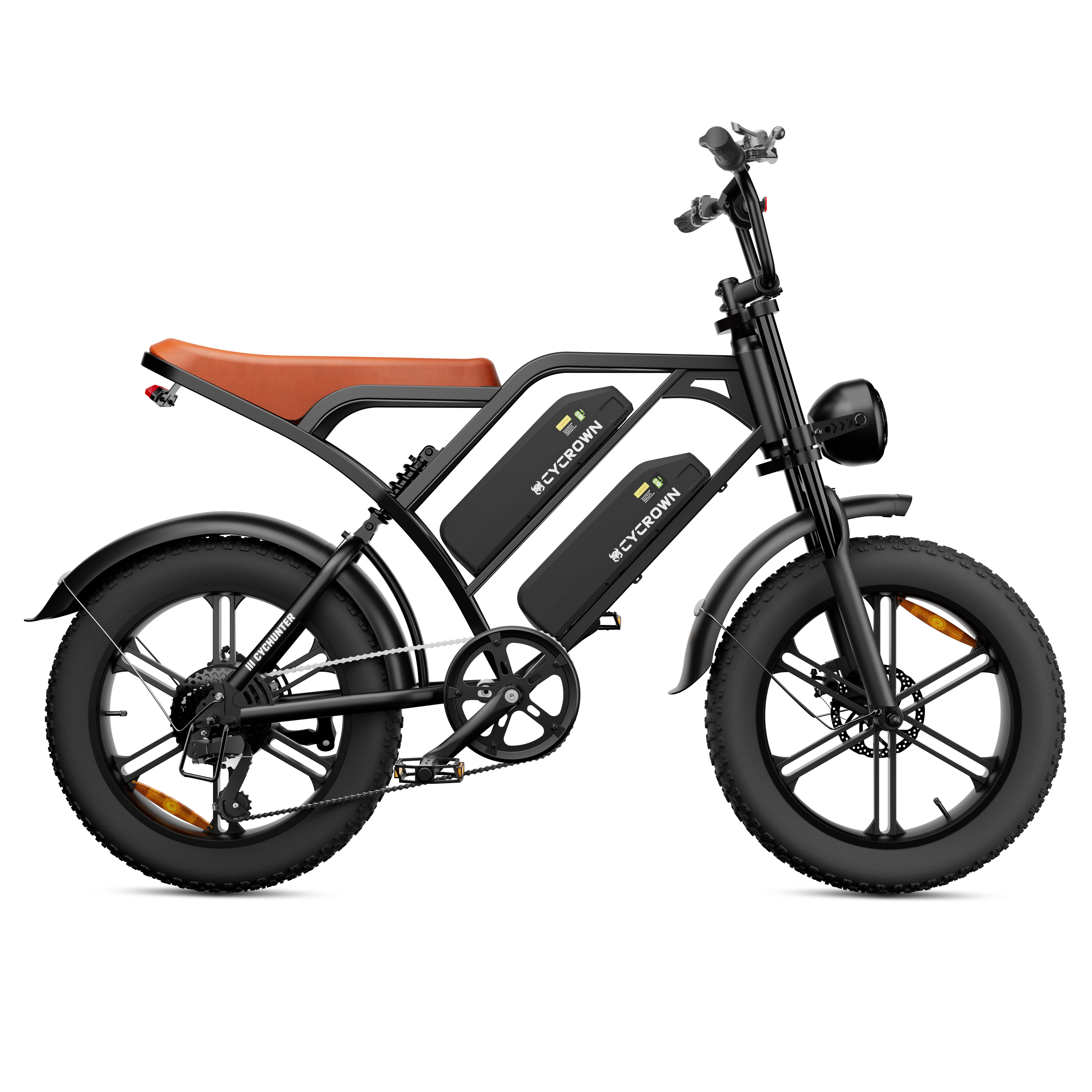Riding a bike needs you to think about safety, and how to choose a bike helmet is very important. A right helmet can reduce the chance of getting a head injury if you crash. The kind of helmet you should buy depends on how you use your bike. For instance, road cyclists should look for helmets that are light and shaped to cut through air easily, while mountain bikers need helmets that cover more of their heads because they are more likely to fall. If you ride an electric bike, choose a helmet that can handle high speeds.
Even if you are very careful, accidents can still happen. In 2019, 846 bike riders died in traffic accidents in the U.S. This shows that danger can come when you least expect it. So don't overlook the importance of a helmet. It's a simple way to make your rides safer. In this article, we will help make sure you find the best helmet for your biking adventures.
Why You Need a Good Bike Helmet

Bike helmets are an essential piece of equipment for any cyclist, whether you're a commuter, a weekend rider, or a serious athlete. A good ebike helmet can protect your head and brain from serious injury in the event of an accident.
Here are some reasons why you need a good bike helmet:
1. Safety Benefits
A good bike helmet can significantly reduce the risk of head injury in the event of a crash. According to the Centers for Disease Control and Prevention (CDC), wearing a helmet can reduce the risk of head injury by as much as 85%. Additionally, wearing a helmet can reduce the risk of brain injury by as much as 88%. These statistics alone should be enough to convince anyone of the importance of wearing a helmet while riding a bike.
2. Legal Requirements
In many areas, wearing a bike helmet is required by law. Failure to wear a helmet can result in fines or other penalties. Even if it's not required by law in your area, it's still a good idea to wear a helmet for your own safety.
3. Choosing the Right Helmet
When choosing a bike helmet, it's important to find one that fits properly and is comfortable to wear. A helmet that doesn't fit properly won't provide adequate protection in the event of a crash. Look for a helmet that meets the safety standards set by organizations such as the Consumer Product Safety Commission (CPSC) or the Snell Memorial Foundation.
Types of Bike Helmets

When it comes to selecting a bike helmet, there are several types to choose from, each with its own set of features and benefits.
Here are some of the most common types of bike helmets:
1. Road Bike Helmets
Road bike helmets are designed for cyclists who spend most of their time on the road. They are lightweight and aerodynamic, with plenty of ventilation to keep you cool during long rides. Road bike helmets typically have a sleek, streamlined design and are built to withstand high-speed impacts. They are ideal for road racing, triathlons, and other high-intensity cycling activities.
3. Mountain Bike Helmets
Mountain bike helmets are designed for off-road cycling and offer more coverage than road bike helmets. They are built to withstand impacts from all angles, with a full-coverage design that protects the back of your head and temples. Mountain bike helmets often come with visors to shield your eyes from the sun and debris on the trail. They are ideal for mountain biking, downhill racing, and other rugged outdoor activities.
4. Commuter Helmets
Commuter helmets are designed for cyclists who use their bikes for everyday transportation. They are stylish yet functional, with features like built-in lights, reflective accents, and adjustable straps for a comfortable fit. Commuter helmets are often more affordable than other types of bike helmets and come in a range of colors and styles to match your taste.
5. BMX Helmets
BMX helmets are designed for extreme sports like BMX biking and skateboarding. They offer full-face protection and extra coverage for the back of your head and temples. BMX helmets often come with additional features like chin guards, visors, and adjustable padding for a custom fit. They are ideal for anyone who participates in high-impact sports that require maximum protection.
6. Kids' Helmets
Kids' helmets are designed with safety in mind and come in a range of sizes to fit children of all ages. It's important to choose a helmet that fits your child properly and has safety features like adjustable straps, reflective accents, and impact-resistant materials. Kids' helmets often come in fun colors and designs to make wearing a helmet more appealing to children.
Factors to Consider When Choosing a Helmet

When choosing a bike helmet, there are several factors to consider to ensure you get the right one for your needs.
Here are some things to keep in mind:
1. Size and Fit
The most important factor when choosing a helmet is getting the right size and fit. A helmet that is too loose or too tight can be uncomfortable and may not provide adequate protection in the event of a crash. To measure your head, wrap a flexible tape measure or a string around the largest part of your head, about one inch above your eyebrows. Then, check the helmet sizing parameters to find the right size for you. It's also recommended to choose a helmet with an adjusting dial for a better fit.
3. Comfort
Comfort is another important factor to consider when choosing a helmet. Features such as ventilation and padding can enhance comfort and keep you cool during long rides. Be sure to try on different helmets and choose one that feels comfortable and snug without being too tight.
4. Weight
The weight of a helmet can also impact your comfort and endurance during rides. While lighter helmets may be more comfortable, they may not provide as much protection as heavier helmets. Consider the type of riding you will be doing and choose a helmet that strikes a balance between weight and protection.
5. Safety Standards
When choosing a helmet, it's important to look for safety certifications such as CPSC, EN-1078, and ASTM. These certifications ensure that the helmet meets safety standards and will provide adequate protection in the event of a crash.
6. Visibility
Finally, consider the visibility of your helmet. Choosing a helmet with bright colors or reflective materials can increase your visibility to motorists and other cyclists, making you safer on the road.
Adjustability Features

When choosing a bike helmet, adjustability is an important factor to consider. The right fit ensures that the helmet stays securely on your head and offers maximum protection. Here are some adjustability features you should look for when choosing a bike helmet:
1. Retention Systems
Retention systems are the mechanisms that keep the helmet securely on your head. Most helmets come with a dial or a ratcheting system that allows you to adjust the fit. Some helmets also have a retention system that wraps around the back of your head, providing a more secure fit. A retention system that is easy to adjust and comfortable to wear is essential for a good fit.
2. Adjustable Straps
The straps on your helmet should be adjustable to ensure a snug and comfortable fit. Look for helmets with straps that can be adjusted at the chin and the ears. Some helmets also have a strap that goes around the back of your head, which can be adjusted to provide a better fit.
3. Other Customization Features
Some helmets come with additional customization features to ensure a perfect fit. For example, some helmets have removable padding that can be adjusted to fit your head. Others have different thicknesses of padding that can be swapped out to provide a better fit. Some helmets also have adjustable visors that can be moved up or down to suit your riding conditions.
Bike Helmet's Materials and Technology

When choosing a bike helmet, it's important to consider the materials and technology used in its construction.
Here's an overview of the most common materials used in bike helmets:
- EPS foam: This is the most common material used in bike helmets. It's a lightweight and durable foam that can absorb a lot of impact. EPS foam is designed to compress upon impact, which helps to absorb the force of the impact and protect your head.
- Polycarbonate shells: Many bike helmets also feature a polycarbonate shell. This is a hard plastic shell that covers the EPS foam. The shell helps to distribute the force of an impact over a larger area, which can help to reduce the risk of injury.
- MIPS technology: MIPS stands for Multi-directional Impact Protection System. This technology features a low-friction layer inside the helmet that allows the helmet to rotate slightly upon impact. This can help to reduce the rotational forces that can cause brain injuries in the event of a crash.
In addition to the materials used, there are also some new technologies that are being incorporated into bike helmets to improve safety. One of the most popular of these is MIPS technology.
Price and Budget
When it comes to buying a bike helmet, price and budget are important considerations. The cost of a bike helmet can vary widely, depending on the brand, the materials used, and the features included.
At the lower end of the price range, you can find bike helmets for as little as $20. These helmets will typically be made of basic materials and offer minimal features. If you're on a tight budget, a lower-priced helmet may be your best option. However, keep in mind that you may be sacrificing some level of comfort, ventilation, or safety.
Bike Helmet Mid-range Price
In the mid-range price point, you can expect to spend between $50 and $100 for a bike helmet. Helmets in this price range will typically offer more features, such as better ventilation, improved adjustability, and increased safety features. These helmets may also be made of higher-quality materials, which can make them more comfortable to wear.
At the higher end of the price range, you can expect to spend $200 or more for a bike helmet. Helmets in this price range will typically offer the most advanced features, such as aerodynamic design, advanced ventilation systems, and cutting-edge safety features. These helmets may also be made of the highest-quality materials, which can make them more comfortable to wear for extended periods of time.
When it comes to finding the best value for your money, it's important to consider your needs and priorities. If you're a casual rider who only goes out on the weekends, a lower-priced helmet may be sufficient. However, if you're a serious cyclist who spends a lot of time on the road, it may be worth investing in a higher-priced helmet with more advanced features.
Where to Buy E-Bike Helmets
When it comes to buying an e-bike helmet, you have two options: online or in-store. Buying online can be convenient and offer a wider selection of helmets, but it can also be difficult to know whether the helmet will fit properly. If you're buying online, make sure to measure your head and check the size chart provided by the manufacturer before making your purchase. You can also look for reviews from other customers to get an idea of how the helmet fits.
Buying Helmet In-store
If you're buying in-store, make sure to try on several different helmets to find the one that fits the best. The helmet should fit snugly but not be too tight, and it should sit level on your head. Make sure to adjust the straps to ensure a secure fit.
Buy E-bike Helmets
When it comes to where to buy e-bike helmets, there are many options available. You can find helmets at bike shops, sporting goods stores, and online retailers. Some popular online retailers for e-bike helmets include Amazon, REI, and Jenson USA. If you're looking for a specific brand or model, you can also check the manufacturer's website to see if they sell helmets directly.
One online retailer that specializes in e-bike helmets is CYCROWN. They offer a wide selection of helmets specifically designed for e-bike riders, with features such as integrated lights and reflective materials for increased visibility. If you're looking for a high-quality smart bike helmet, CYCROWN is worth checking out.
Proper Maintenance and Care for Your Bike Helmet

Taking good care of your bike helmet is important to ensure it provides the best protection possible.
Here are some tips for maintaining and caring for your helmet:
Cleaning your helmet
- Use a mild soap and warm water to clean the exterior of your helmet. Avoid using harsh chemicals, as they can damage the foam and plastic shell.
- If your helmet has removable pads, take them out and hand wash them with mild soap and warm water. Allow them to air dry completely before reinserting them.
- Do not submerge your helmet in water or put it in the dishwasher, as this can damage the helmet.
Storing your helmet
- Store your helmet in a cool, dry place away from direct sunlight.
- Avoid storing your helmet near chemicals or extreme heat, as this can damage the foam and plastic shell.
- Do not hang your helmet by its straps, as this can stretch them out and compromise their strength.
When to replace your helmet
- Replace your helmet if it has been involved in a crash or impact, even if there is no visible damage.
- Replace your helmet if it is more than 5 years old, as the foam can degrade over time and become less effective at absorbing impact.
- Check your helmet regularly for signs of wear and tear, such as cracks, dents, or loose straps. If you notice any damage, replace your helmet immediately.
Final Thoughts on Choosing a Bike Helmet
Choosing the right bike helmet is crucial for your safety and performance while cycling.
Here are some key points to keep in mind:
-
Always choose a helmet that fits properly. The fit system should be adjustable and snug, but not too tight. A poorly fitting helmet can compromise its effectiveness in protecting your head and brain in the event of an impact.
-
Consider the type of cycling you'll be doing and choose a helmet that is appropriate for that activity. Different types of helmets provide varying levels of protection and ventilation.
-
Look for a helmet with a sturdy cellular structure that can absorb impact forces and reduce the risk of traumatic brain injuries. The helmet should also have a hard plastic shell to protect your head and neck.
-
Regularly inspect your helmet for any signs of wear and tear, and replace it if it has been involved in a crash or is damaged in any way.
Remember, wearing a helmet is one of the most effective ways to prevent head injuries while cycling. Studies have shown that helmets can reduce the risk of head injury by up to 85%. So, make sure you choose a helmet that is both comfortable and safe, and wear it every time you ride your bike.
Important Note:
Secure your ride with the perfect bike helmet from our selection and complement it with a Cycrown Electric Bike. Visit our shop now for competitively priced e-bike accessories and Ebikes.
Frequently Asked Questions
Does the type of bike helmet matter?
Yes, the type of bike helmet you choose matters. Different types of helmets are designed for different types of cycling. For example, road bike helmets are designed for speed and ventilation, while mountain bike helmets are designed for impact protection and durability. It's important to choose a helmet that is appropriate for the type of cycling you will be doing.
What type of helmet should a rider most use?
The type of helmet a rider should use depends on the type of cycling they will be doing. If you will be riding on the road, a road bike helmet is the best choice. If you will be riding on trails or off-road, a mountain bike helmet is the best choice. If you are unsure which type of helmet is best for your needs, consult with a bike shop or do some research online.
Should you wear a visor on a bike helmet?
Whether or not you should wear a visor on your bike helmet is a matter of personal preference. A visor can help protect your eyes from the sun, rain, and other elements, but it can also obstruct your vision and make it harder to see. If you do choose to wear a visor, make sure it is securely attached to your helmet and does not interfere with your vision.
How often should you change your bicycle helmet?
You should replace your bicycle helmet every 5-10 years, or sooner if it has been involved in a crash or has visible signs of damage. Over time, the materials in a helmet can degrade, reducing its ability to protect your head in the event of a crash. If you are unsure whether your helmet needs to be replaced, consult with a bike shop or the manufacturer.
How do I know if my bike helmet is MIPS?
MIPS (Multi-directional Impact Protection System) is a technology used in some bike helmets to provide additional protection against rotational forces in the event of a crash. If your helmet is MIPS-equipped, it will typically have a yellow or white MIPS sticker on the inside of the helmet. You can also check the manufacturer's website or product information to see if a particular helmet is MIPS-equipped.










